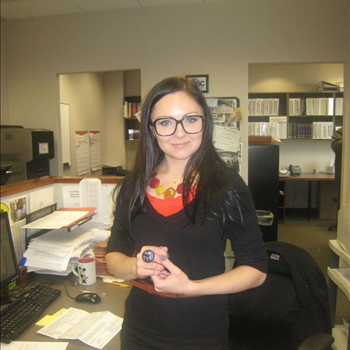Right Now
7 Things to Know Before Hysteroscopic Myomectomy

So, your doctor told you that you need a hysteroscopic myomectomy, and now you're Googling like your life depends on it. What even is this procedure? Is it as scary as it sounds? And most importantly, will you ever feel like yourself again?
Deep breath. You got this. Hysteroscopic myomectomy is a minimally invasive procedure to remove pesky uterine fibroids without cutting into your abdomen. And while it’s totally normal to feel a little nervous, knowing what to expect can make the whole thing way less intimidating.
Here are seven things you should know before your hysteroscopic myomectomy—because knowledge is power (and also way better than spiraling on the Web).
1. This is One of the Least Invasive Ways to Remove Fibroids
If you have submucosal fibroids (the ones growing inside your uterus), a hysteroscopic myomectomy is one of the best ways to remove them, without major surgery.
Instead of making big incisions, your doctor will go in through the vagina (yep, no external cuts!) and use a tiny camera and surgical tools to remove the fibroids from the inside of the uterus.
Think of it like cleaning up your uterus without wrecking the whole house.
2. You’ll Be Asleep or Super Relaxed
Most people have this procedure done under general anesthesia (so you’ll be snoozing) or sedation (so you’ll be super relaxed and not really aware of what’s happening).
Either way, you won’t feel a thing, and you definitely won’t remember it. So no need to worry about any medieval torture vibes here!
3. The Procedure Itself is Pretty Quick
Unlike some surgeries that take hours, a hysteroscopic myomectomy is usually done in 30 minutes to an hour.
You could literally be in and out before your best friend finishes watching an episode of her favorite drama series.
4. You Might Go Home the Same Day
Since this is a minimally invasive procedure, most people don’t even have to stay overnight at the hospital.
You’ll need someone to drive you home, and you’ll probably spend the rest of the day feeling a little groggy—but hey, that’s the perfect excuse for a guilt-free nap.
5. Cramps and Spotting Are Normal
After the procedure, you might experience mild to moderate cramps, similar to period pain. Some spotting or light bleeding is totally normal for a few days (or even a couple of weeks).
Basically, your uterus just went through a deep cleaning, and now it’s taking a minute to calm down.
Hot water bottles, comfy blankets, and maybe a little chocolate? Highly recommended.
6. Your Fertility Might Improve
If you’ve been struggling with infertility or recurrent miscarriages, fibroids could be part of the problem.
Since submucosal fibroids can interfere with implantation and pregnancy, removing them can actually increase your chances of conceiving.
Of course, every person is different, so if you’re trying to get pregnant, talk to your doctor about what to expect post-surgery.
7. It’s Not a One-Size-Fits-All Solution
A hysteroscopic myomectomy is amazing for certain types of fibroids, but it’s not the right treatment for all fibroids.
If your fibroids are large, deeply embedded, or growing outside the uterus, your doctor might recommend a different approach (like a laparoscopic or abdominal myomectomy).
That’s why it’s so important to talk to a doctor who specializes in fibroid treatment—they’ll help you figure out the best plan for you and your body.
Final Thoughts: You Got This!
A hysteroscopic myomectomy might sound intimidating, but it’s actually one of the least invasive ways to get rid of fibroids and improve your health.
The recovery is quick, the benefits can be huge, and before you know it, you’ll be feeling better, bleeding less, and back to your regular life.
So if you’re scheduled for this procedure, take a deep breath—you’re in good hands!
More Posts



















Map
Amelia Grant
Get DirectionsAmelia Grant
-
31-57 37th St
Long Island City, New York 11103
United States - 6462709836
Report This Post
Please complete the following requested information to flag this post and report abuse, or offensive content. Your report will be reviewed within 24 hours. We will take appropriate action as described in Findit terms of use.


